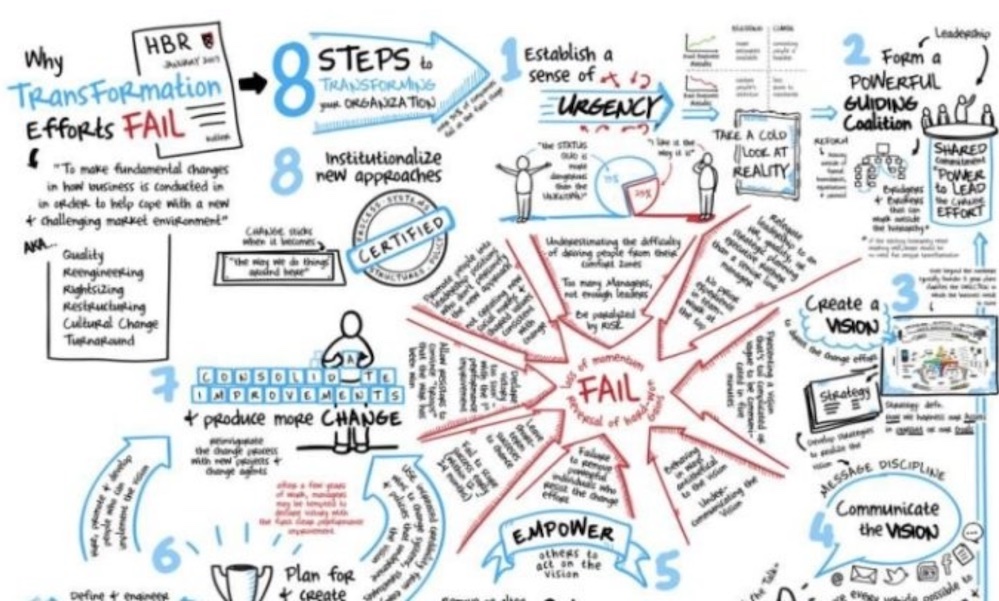Organisational Change: Do change efforts REALLY fail?

Organisational Change failure - hype
Where did this all start?
According to Hughes (2011) it can be sourced to three research articles published in the 1990’s: Beer, Eisenstat, & Spencer, 1990; Hammer & Champy, 1993; and Kotter, 1995. Hughes (2011) critically reviewed a number of published articles discussing change failure and concluded there was no valid and reliable empirical evidence to support the popular belief there was an inherent 70 per cent change failure rate. Interestingly, Hughes published a follow up article in 2022 in which he states “failure rhetoric remains academically fashionable, arguably resulting in the academic field of organisational change being stuck in a quagmire” (Hughes, 2022, p8):
70% of all change fail: apart from the obvious but more technical questions regarding how to define change and how to measure success/failure, this illusion has been identified as unsubstantiated by Hughes (2011). Still, many articles, books, change leadership development pro- grammes and sessions, and change initiatives start with this unchallenged assumption (By, 2020, p. 3 in Hughes, 2022).
How organisational change success is assessed
The questions posed are indeed the same as ACMP members have illuminated: what measures are used to assess a change program’s success or failure? Jones et al (2019), in their meta-analytical review of change failure in 200 case studies, suggest there is a lack of clarity as to what is meant by ‘failure’. For example: a failure to achieve all the outcomes set? Or a failure to engage all employees with the change? Or a need to make further changes once the initial change has been completed? And the success of a change effort depends on who you’re asking (someone leading the change, employees, external stakeholders); the context (public sector change initiatives are more difficult to achieve than those in the private sector due to their political nature and bureaucratic role and rule-based culture); and whether the change initiative’s failure/success can be separated from other activities that may help or hinder the change process.
Emerging models
And the change outcomes are not the only thing practitioners should be scrutinizing; well used change management frameworks and models of planned change are now being less relied upon in favor of more emergent approaches to change which advocate a more practical approach. Examples from Jones et al’s (2019) research include Kanter et al.’s (1992) 10 Commandments; Kotter’s (1995; 2014) 8 stages or phases of actions for leaders/managers of change to follow; and Luecke’s 7 steps (2003) with Kotter’s much cited work considered to be the ‘orthodoxy for change leadership’ (Todnem By, Hughes & Ford, 2016, p. 11.).
Lessons learned
In summary, Jones et al (2019) found 72.5% of the case studies they reviewed considered their change initiatives to be successful, which supports the research undertaken by Hughes (2011). As a postscript, we suggest that in evaluating change initiatives, there are shades of grey to be considered in the discussion of ‘failure’. It may serve organisations, change managers, and consultants better, if a) change success and failure was defined from the start of the change initiative; and b) ‘lessons learned’ was a kinder teacher than the ‘failures of change’ in the post implementation review.
References
Hughes, M. (2011). Do 70 per cent of all organizational change initiatives really fail? Journal of Change Management, 11(4), 451–464. doi:10.1080/14697017.2011.630506
Hughes, M. (2022) Reflections: how studying organizational change lost its way? Journal of Change Management: Reframing leadership and organizational practice, 22(1), 8–25. https://doi.org/10.1080/14697017.2022.2030980
Jones, J., Firth, J., Hannibal, C., & Ogunseyin, M. (2019). Factors Contributing to Organizational Change Success or Failure. In R. Hamlin, A. Ellinger, & J. Jones (Eds.), Evidence-Based Initiatives for Organizational Change and Development (pp. 155-178). Hershey, PA: IGI Global. doi:10.4018/978-1-5225-6155-2.ch008.
Tasler, N. (2017). Stop Using the Excuse “Organizational Change Is Hard”. hbr.org/2017/07/stop-using-the-excuse-organizational-change-is-hard
By Dr Andrea Howell and Mike Bengough
Directors of Hoben Workplace Consulting and members/joint leaders of the Learning & Development Division of the Association of Change Management Professionals (ACMP) – ANZ branch.
Key Messages:
- 70% failure rate of change initiatives has not been empirically proved so be wary of citing this statistic.
- Define what success/failure means to the organisation at the beginning of the change initiative; then conduct the post change review.
